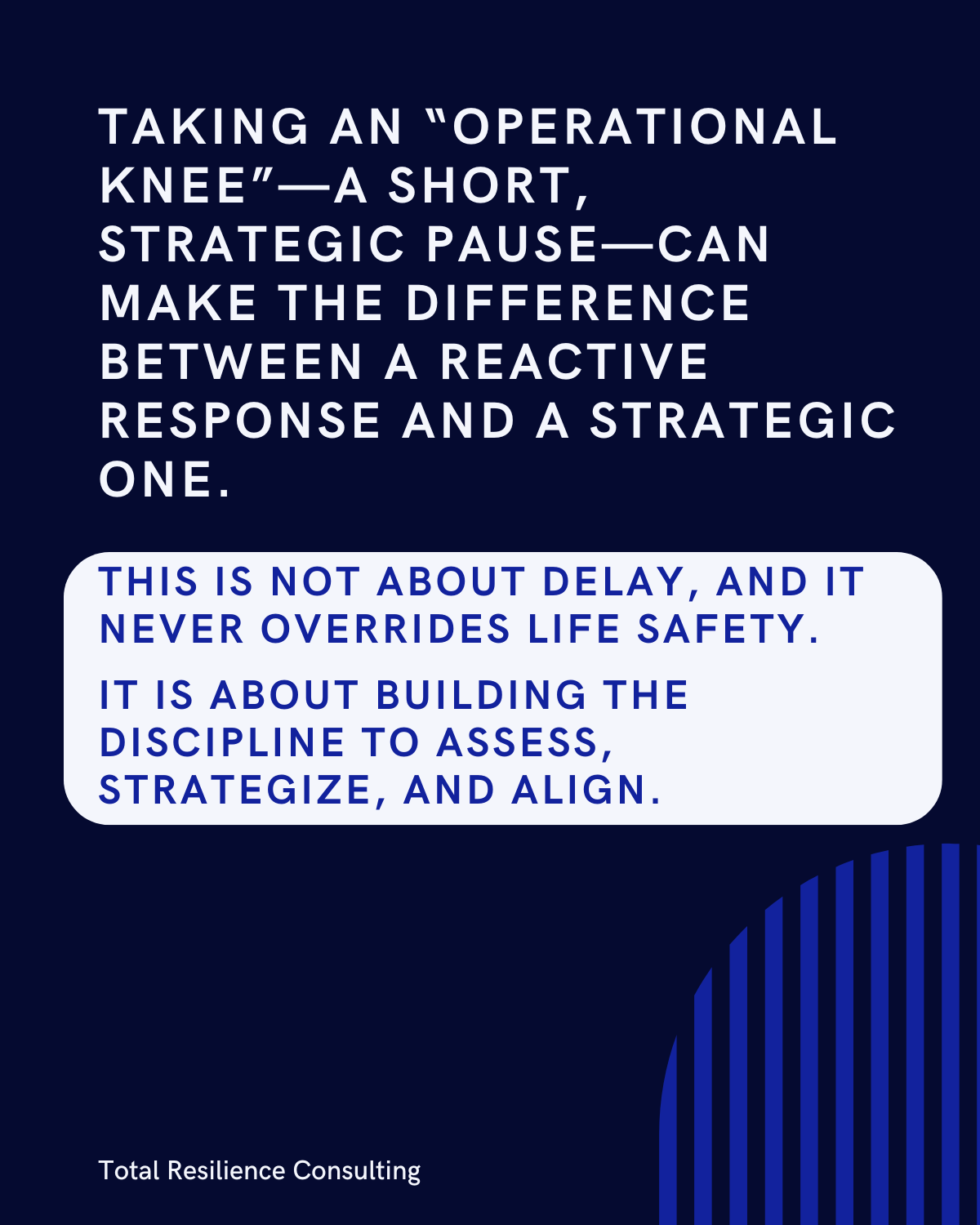
A strategic pause isn’t a luxury—it’s a leadership responsibility.
In the rush that follows a crisis, the pressure to act immediately is real, driven by politics, public scrutiny, and urgency on the ground. But moving fast without structure can cost time, clarity, and effectiveness down the line.
Taking an “operational knee”—a short, strategic pause—can make the difference between a reactive response and a coordinated one. This isn’t about delay, and it never overrides life safety. It’s about building the discipline to pause, assess, and align.
Even a few hours can allow teams to:
- Establish clear data and communication flows
- Identify and configure critical technologies
- Pressure-test plans through red teaming
These often-overlooked steps become harder, if not impossible, to retroactively fix once the response is underway.
This pause must be a built-in step, not a leader’s afterthought. Executives and emergency managers alike have to require it, model it, and protect the space for it.
A well-timed pause isn’t slowing down. On the contrary, it is setting up to move smarter.
For more insights, check out Total Resilience Consulting.
With two decades of experience in the emergency management and public safety field, Devra Schwartz is the Founder and President of Total Resilience Consulting, offering public safety, emergency management, data management, and GIS expertise to government and the private sector.